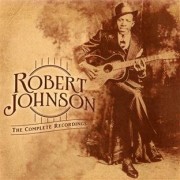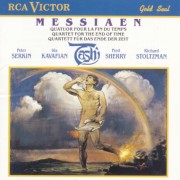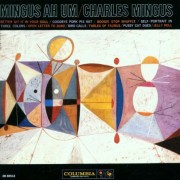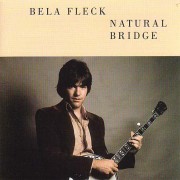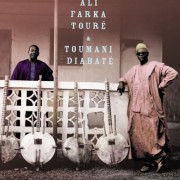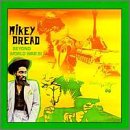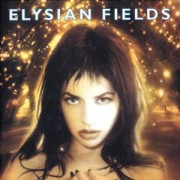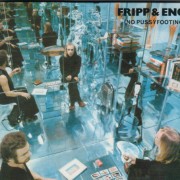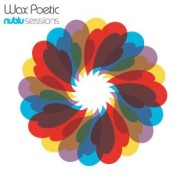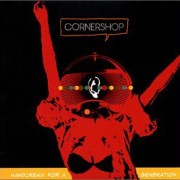NO SELF-RESPECTING writer should ever undertake the process of making a list lightly. As we all know, lists are ultimately trivial, subjective and practically a provocation inviting rebuttals, questions and caustic dismissal. They are, therefore, matters of life and death. Making this list made me (more) insane, so I know my mission is accomplished, in spirit if not actuality. Even picking the title caused consternation: some people will know and love all of these albums; all people will love and know some of them. The point, simply, is to celebrate fifty that I don’t think get enough love, and that I recommend without reservation. That said, this is not an exercise in obscurity: we already have hipsters happy to select the most abstruse or impossible-to-procure albums. In the cases where I allow for works I know a lot of people recognize, I’ve included them because in my experience, not nearly enough people seem to own them (spoiler alert: the top two selections are critically regarded masterpieces, but in my humble opinion they should be a great deal more beloved and recognized).
I enforced a few guidelines to make the project manageable: there is exactly one blues album, one classical, one “world music”, one country/bluegrass, one soundtrack and one jazz (but I broke that rule, inevitably): entire lists could—and should—be made of each genre, and I tried to limit the reggae, because an entire list is begging to be made at some point. There are more than a few albums on this list that I heard or read about and all music fanatics understand the karmic implications of turning friends and strangers on to albums that improve their lives. Getting off the familiar path always is always a word-of-mouth enterprise, so I thank everyone in advance for mentioning lesser known albums that warrant celebration in the comments section.
Let’s get it on.
50. Robert Johnson: The Complete Recordings
Yes, everyone has heard of him. But have you heard this music? Do you own his collected works? They fit on one disc, so there’s no acceptable excuse not to.
Does any single figure loom as large over an art form as Robert Johnson? Bach and Shakespeare come to mind, but classical music, like literature, took centuries and multiple cultures in order to unfold and evolve. The history of American popular music came to be dominated by rock and roll, which initially flowered as a (mostly white) appropriation of the blues. The blues was the common language and unifying force of all rock’s earliest practitioners, many of whom were obsessed with the music made in the first part of the 20th century. It’s well documented that most of the artists from what came to be called the British Invasion were inspired and driven by the example of blues legends like Muddy Waters and Howlin’ Wolf. Put simply, the one individual who even those masters must be measured against, in terms of influence and innovation, is Robert Johnson.
Perhaps the most effective way of getting a handle on Johnson’s unshakable impact is to consider the number of his songs covered by other musicians. Even a listener more than casually acquainted with rock (and blues) history is likely to underestimate how many compositions—popularized by other rock (and blues) musicians spanning several decades—were originally written and recorded by Johnson over the course of a mere seven months in 1936 and 1937. And as anyone who knows can attest, this is not remotely music for a museum, relics to acknowledge before moving on. It is exciting, joyful noise, brimming with purpose and ingenuity, fun and frightening, enigmatic and awe-inspiring.
In sum, if you consider yourself a fan of history, or culture, or America, or Art (etc.), you need this in your collection, and not as something to put on display, but something you will return to, often, to remember how deep, dark and mind-boggling humanity can be, at its best.
49. Olivier Messiaen: Quartet for the End of Time
Quatuor pour la fin du temps (Quartet for the End of Time), is a chamber quartet by French composer Olivier Messiaen. This music was not merely inspired by the concentration camps, it was written, and then performed there. True story, and worth looking up. When considering the circumstances that accompanied its creation, the hyperbolic title not only seems appropriate but even inadequate. The music itself? Exactly what you might expect: stirring, solemn, celebratory. It is a living document of endurance and memory, and it is the soundtrack of a hope that can never be silenced.
48. Charles Mingus: Mingus Ah Um
One of the most special aspects of Mingus Ah Um is the way it functions as a sort of encyclopedia of the best jazz music recorded to that point. Mingus was as generous in celebrating the musicians who inspired him as he was ardent in discovering them. Plain and simple, Mingus Ah Um sounds like the 20th Century: it is a self-portrait of a man who helped define the direction of post-bop jazz, commenting on the country that created him. Charles Mingus was, above all things, a fighter. Since nothing came easily to him, his struggles—as a musician, as a man—acted as the kiln in which his character was forged. This is how Mingus, mercurial and larger than life, manages to encapsulate so many aspects of the American story: he battled to find his artistic voice, then he strived—often stymied by rejection or indifference—to have that voice heard. Eventually, inevitably, he managed to create material that was too brilliant to be ignored.
47. Bela Fleck: Natural Bridge
It’s possible there is not a more maligned or misunderstood type of music than bluegrass. Banjo wizard Bela Fleck is probably the best-known practitioner of what is commonly referred to as “Newgrass” (progressive bluegrass). His credentials are unimpeachable, and his entire discography is consistently remarkable, but Natural Bridge stands out as a document that can entice a newbie and satisfy an aficionado. Pushing boundaries and styles, the results are buoyant and expressive, a tour de force of collective musicianship: every song is hummable and manages to sound familiar yet fresh on first listen. It’s difficult to imagine anyone with a remotely open mind being immune to the considerable charms on display, and it’s likely this could be a gateway to a love affair that never ends.
46. Ali Farka Toure and Toumani Diabate: Ali & Toumani
Although Mali legend Ali Farka Touré was taken entirely too soon (despite having lived a long and productive life, artistically and spiritually) in 2006 after battling cancer, this posthumous release, his second collaboration with kora master Toumani Diabete, is an ideal summation of his work and perfect point of entry for newcomers. The interplay between these two men is exceedingly rare in any type of music. Ali and Toumani is profound and powerful, with a soft accumulating force, like the individual drips of ice that form a river. This desert music is very much like the desert itself: it is expansive and immutable, and it will endure.
45. Mikey Dread: Beyond World War III
If Mikey Dread (Michael Campbell) had never decided to pick up the microphone and sing, his status would be secure in reggae history. His groundbreaking weekly show on Jamaican radio, the ingeniously entitled Dread at the Controls not only made him a celebrity, but it brought Jamaican music to the masses, making hometown heroes out of otherwise obscure acts (And then there is his fruitful, crucial association with The Clash: keyword Sandinista!).
This is one of the true lost classics. No, that’s not accurate. It’s more accurate to remember that it was never considered a classic in the first place, so it’s not a matter of it being lost so much as never having been found. And that is unacceptable. The style here is heavy dub, with Dread (who, again, already had plenty of experience perfecting mash-ups of reggae hits) applying his considerable production acumen to his own songs. The mood is mostly upbeat, at times festive, at times jovial and, when appropriate, somber. This is party music for the apocalypse.
44. Elysian Fields: Bleed Your Cedar
This album should have made the beautiful Jennifer Charles a superstar. That it didn’t says more about our country, and its tastemakers, than it does about Elysian Fields. The songwriting and guitar playing of Oren Bloedow is effulgent throughout, and the album manages to be spooky and luminous at the same time. Centerpiece “Fountains on Fire” is sexy yet forbidding: Charles is a siren who will lull you to sleep and then steal your soul. Other tracks like “Jack In The Box” and “Anything You Like” have unmistakable noir elements while delivering the adrenaline. This is lounge music from hell, sung by an angel.
43. Robert Fripp and Brian Eno: No Pussyfooting
The origin of ambient? If not, definitely one of the early, and more enduring experiments that led to thousands of lifeless imitations. Considering the pedigrees of both men (long since anointed as legends) it’s almost impossible to imagine this not being brilliant, but recalling the relatively primitive conditions in which it was recorded, No Pussyfooting remains a revelation. Considering Fripp was in the midst of recording masterpieces with King Crimson’s most riotous ensemble and Eno was fresh out of Roxy Music, the subdued, glacial pull of this album is the type of anomaly we now know we could—and should—have expected from these two geniuses. In addition to being a remarkable recording in its own right, this can also be seen as a template for the types of sounds Eno and Fripp are still experimenting with, four decades later.
42. Wax Poetic: Nublu Sessions
Yes, this is the one that has Norah Jones on it. And I’m grateful for two reasons. First, even though Jones sings on only two tracks, they are both top-notch. Second, her involvement in this project clearly elevated its commercial appeal and helped more people stumble upon it. Nublu Sessions features a variety of guest vocalists, all to incredible effect. In addition to Jones, we get N’Dea Davenport, U-Roy and especially Marla Turner, whose vocals are some of the sexiest and most memorable of the last decade. Turner’s work on “Della” is an instant classic that invokes Motown filtered through a psychedelic jukebox: it is an ethereal Burt Bacharach song, equal parts Dionne Warwick, Isaac Hayes and Portishead. Nublu Sessions effortlessly meshes jazz, rock and pop, and is everything that great music is capable of being. Do yourself a favor and grab hold of this.
41. Cornershop: Handcream for a Generation
It seemed too good to be true that this band became one of the big stories in 1997 with their breakthrough When I Was Born For The 7th Time. In a way, it was. Whether because of pressure (self-imposed and critical) or lack of sufficient inspiration, it took them over five years to make their next album. With America’s typical attention span, that meant they were not only mostly forgotten, but effectively yesterday’s news. It’s a shame, then, that this atmosphere (partly of their own making) led to the apathetic embrace of 2002?s brilliant Handcream For A Generation. It’s difficult to pinpoint exactly why this album was (and continues to be) met with such indifference. Certainly, it doesn’t have the sure-fire hit single that “Brimful of Asha” was, but in many ways, the best songs on this album are better than the best songs on the one that preceded it.
In any event, it is one that remains ripe for reeavaluation, and the delights it contains are considerable. Put as simply as possible, anyone who dug When I Was Born For The 7th Time is strongly encouraged to snatch Handcream For A Generation. Cornershop’s inimitable Indian/British rock permutations are consistently clever, inventive and always, always cool as shit. This is one of the coolest albums of the new century and, in fact, it may be too cool for its own good. For skeptics or naysayers, how can you possibly go wrong with a record that has a song entitled “Lessons Learned from Rocky I to Rocky III”? This is intelligent music that makes you want to dance, laugh, and marvel at how such creativity is conceived in the first place.

